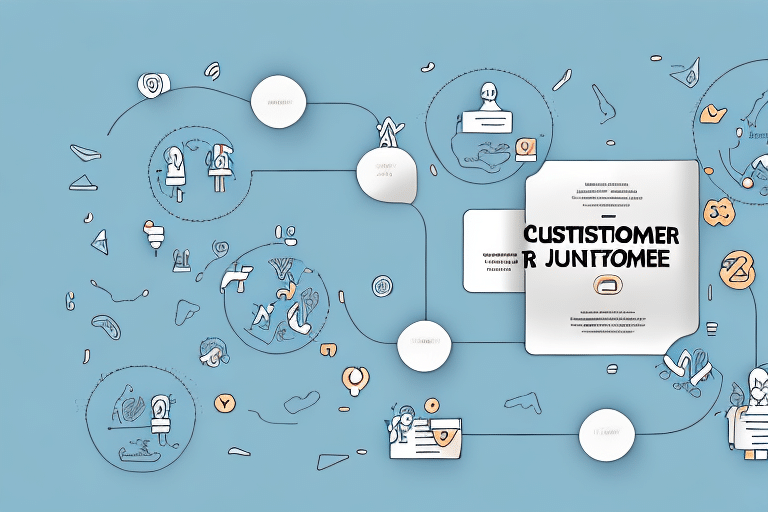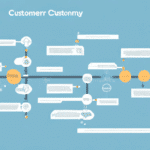7 Customer Retention OKR Examples to Boost Your Business Growth
As a business owner, retaining and building a loyal customer base is paramount. While numerous strategies exist to achieve this, Objectives and Key Results (OKRs) have proven highly effective in enhancing customer retention rates. This article explores 7 customer retention OKR examples designed to help businesses increase their retention rates.
Understanding OKRs and Their Role in Customer Retention
What Are OKRs?
OKRs (Objectives and Key Results) are a goal-setting framework used by organizations to define and track objectives and their corresponding measurable results. An objective is a clearly defined goal, while key results are specific, measurable actions or milestones that indicate progress toward achieving that goal.
How OKRs Enhance Customer Retention
Applying OKRs to customer retention allows businesses to focus on specific, impactful metrics that drive loyalty and satisfaction. By establishing clear objectives aligned with customer needs and measuring key results, companies can systematically improve the customer experience, thereby increasing retention rates.
For example, an objective might be to "Enhance Customer Support Responsiveness," with key results focused on reducing response times and increasing satisfaction scores.
The Importance of Customer Retention in Business Growth
Customer retention is a critical factor for sustainable business growth. Retaining existing customers is more cost-effective than acquiring new ones, and loyal customers tend to generate higher revenues over time. According to a Bain & Company study, increasing customer retention rates by just 5% can lead to a profit increase of 25% to 95%.
Key Factors Influencing Customer Retention Rates
Product or Service Quality
The quality of your product or service is foundational to retaining customers. Consistently delivering high-quality offerings meets customer expectations and fosters loyalty.
Customer Service Excellence
Exceptional customer service can significantly enhance customer satisfaction and loyalty. Immediate and effective responses to customer inquiries and issues play a crucial role in retention.
Brand Reputation
A strong, positive brand reputation instills trust and encourages repeat business. Maintaining a reputable brand requires consistent performance and positive customer interactions.
Customer Experience
A seamless and enjoyable customer experience across all touchpoints encourages customers to stay loyal to your brand. This includes user-friendly interfaces, easy navigation, and a hassle-free purchasing process.
Setting Effective Customer Retention OKRs
Define Clear Objectives
Start by identifying specific, achievable goals related to customer retention. Objectives should align with your overall business strategy and address key areas impacting retention.
Establish Measurable Key Results
Each objective should have 2-5 key results that are quantifiable. These results should reflect the desired outcomes and provide a clear measure of progress toward the objective.
Involve All Stakeholders
Ensure that all relevant teams—such as marketing, sales, and customer service—are involved in the OKR setting process. This promotes alignment and collaborative efforts towards common goals.
7 Example OKRs for Increasing Customer Retention Rates
- Objective: Improve Customer Satisfaction
- Key Result: Increase Net Promoter Score (NPS) from 7 to 9
- Key Result: Reduce customer complaints by 20%
- Objective: Enhance Customer Support
- Key Result: Reduce average response time to customer inquiries by 50%
- Key Result: Achieve a customer support satisfaction rate of 95%
- Objective: Increase Customer Engagement
- Key Result: Boost monthly active users by 30%
- Key Result: Achieve a 25% increase in email open rates
- Objective: Develop Loyalty Programs
- Key Result: Launch a new loyalty program within 3 months
- Key Result: Register 10,000 customers in the loyalty program within 6 months
- Objective: Enhance Product/Service Quality
- Key Result: Decrease product/service-related issues by 40%
- Key Result: Achieve a customer satisfaction rate of 90% for product/service quality
- Objective: Improve Customer Onboarding Experience
- Key Result: Reduce customer onboarding time by 20%
- Key Result: Achieve a 95% satisfaction rate in onboarding feedback surveys
- Objective: Increase Customer Retention Rate
- Key Result: Reduce churn rate from 8% to 5%
- Key Result: Increase customer renewal rate by 15%
Best Practices for Implementing and Measuring Customer Retention OKRs
Effective Communication
Clearly communicate the objectives and key results to all stakeholders to ensure alignment and understanding across the organization.
Regular Progress Reviews
Conduct regular reviews to monitor progress toward OKRs, allowing for timely adjustments to strategies and initiatives as needed.
Foster Team Collaboration
Encourage teamwork and collaboration among different departments to achieve common retention goals, breaking down silos and enhancing coordination.
Provide Necessary Resources and Training
Equip your teams with the necessary tools, training, and resources to effectively work toward achieving the set OKRs.
Measure and Analyze Key Results
Use data analytics to track and measure key results, ensuring that the progress aligns with the objectives. Tools like Tableau and Power BI can be invaluable for data visualization and analysis.
Advanced Strategies: Leveraging Data Analytics and Employee Engagement
Utilizing Data Analytics
Employing data analytics allows businesses to gain deeper insights into customer behavior, preferences, and needs. By analyzing customer data, companies can identify trends, predict churn, and tailor their strategies to enhance retention.
Creating a Culture of Customer Retention
Engaged and motivated employees are essential for fostering a customer-centric culture. Invest in employee engagement strategies such as training, incentives, and recognition programs to ensure that your team is committed to delivering exceptional customer experiences.
Case Studies: Success Stories in Increasing Customer Retention with OKRs
- Company A: By setting specific objectives related to customer support and engagement, Company A increased its customer retention rate by 25% within a year.
- Company B: Focused on improving product quality and launching a loyalty program, resulting in a 20% increase in repeat customers.
- Company C: Implemented data analytics to better understand customer needs and preferences, leading to a 15% reduction in churn rate.
Conclusion
Implementing customer retention OKRs is a powerful strategy for businesses aiming to enhance retention rates and drive growth. By setting clear objectives, involving all stakeholders, and adhering to best practices, businesses can achieve measurable results. Remember, customer retention is crucial for sustained success, and OKRs provide a structured approach to attaining it.






















